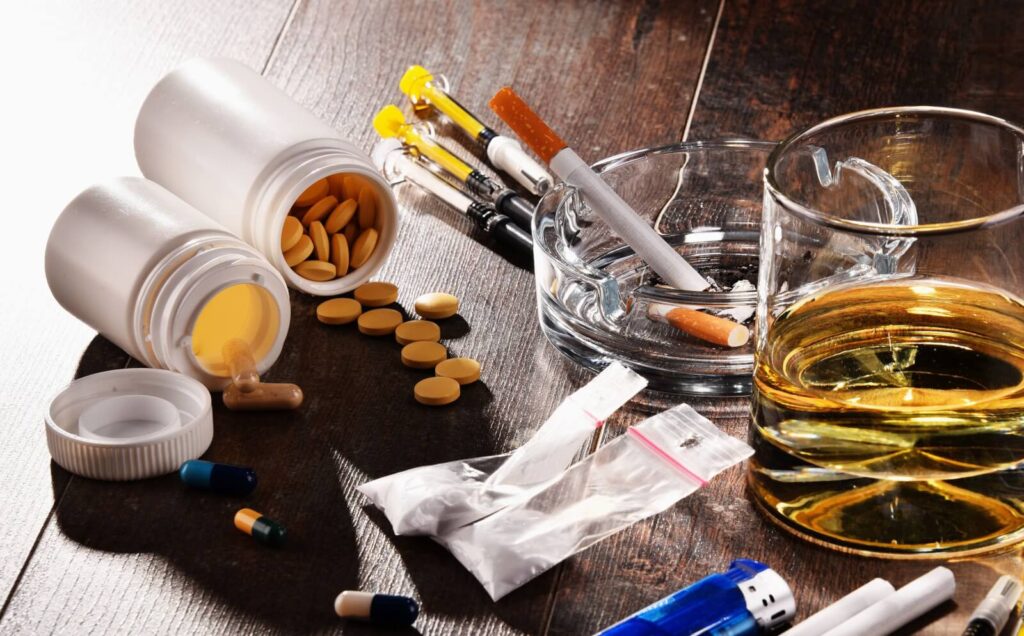Alcohol and substance abuse is the excessive use of drugs or alcohol with negative physical, social, and spiritual consequences. These behaviors can lead to addictions characterized by compulsive drug use despite negative consequences. Substance abuse can affect a person’s health, relationships, and performance at work or school. This article discusses the different types of alcohol and drug abuse, their signs and symptoms, risk factors, and treatment.
Types of alcohol and drug abuse:
- Alcohol Abuse: Alcohol abuse is the excessive consumption of alcohol that has negative physical, social, and psychological consequences. It can cause liver damage, heart disease, and even death. Chronic alcoholism can also lead to addiction.
- Prescription drug abuse: Prescription drug abuse includes the use of over-the-counter drugs or the unintended use of drugs. These include pain relievers, sleeping pills, and anti-anxiety medications. Misuse of prescription drugs can lead to poisoning, respiratory problems, and heart failure.
- Illegal Substance Abuse: Illegal substance abuse is the use of illegal drugs such as cocaine, heroin, and methamphetamines. Illegal substance abuse can cause a variety of health problems, including heart disease, stroke, and mental health problems such as depression and anxiety.
- Inhalation Abuse: Inhalation abuse involves inhaling chemicals in household products such as glue, paint, and gasoline. Overuse of inhalants can cause brain damage, liver damage, and even death.
Signs and symptoms:
Signs and symptoms of alcohol and drug abuse may vary depending on the individual and the nature of the abuse. However, some common signs and symptoms include:
- Behavioral changes such as irritability, aggression, or mood swings.
- Quit social activities, hobbies, or interests.
- Neglecting responsibilities at work, school, or home.
- Poor performance at work or school.
- Changes in appetite or sleep patterns.
- Physical changes such as weight loss, tremors, or red eyes.
- Changes in personal hygiene and appearance.
Risk factors:
Several factors increase the risk of alcohol and drug abuse:
- Family history of addiction: People with a family history of addiction are more likely to become addicted themselves.
- Trauma: Traumatic events, such as physical or sexual abuse, can lead to drug use as a way to cope with the trauma.
- Mental health conditions: People with mental health conditions, such as depression or anxiety, are more likely to become addicted.
- Peer pressure: Pressure from friends or social groups to use drugs or alcohol can increase the risk of addiction.
Treatment:
There are many treatments for alcohol and drug abuse, including:
- Behavioral therapy: Behavioral therapy aims to change a person’s attitudes and behaviors toward drug or alcohol use. Examples of behavioral therapy include cognitive behavioral therapy (CBT), emergency management, and motivational interviewing.
- Medications: Some medications can help individuals manage withdrawal symptoms and reduce drug cravings. Examples of drugs used to treat addiction include methadone, buprenorphine, and naltrexone.
- Support Groups: Support groups such as Alcoholics Anonymous (AA) and Narcotics Anonymous (NA) can provide individuals with peer support and help them stay sober.
- Inpatient and Outpatient Treatment Programs: Inpatient treatment programs provide intensive care in a residential setting, whereas outpatient treatment programs allow individuals to receive treatment while continuing to live at home.
Conclusion:
Alcohol and drug abuse can have significant negative effects on an individual’s physical, social, and mental health. Recognizing the signs and symptoms of poisoning is important for individuals to get the help they need.


More Stories
Why Third Party Manufacturing Is the Backbone of the Pharma Industry in 2025
Becoming a Pharmaceutical Distributor with Aenor Pharmaceuticals
Is Your Sedentary Lifestyle Destroying Your Hip?